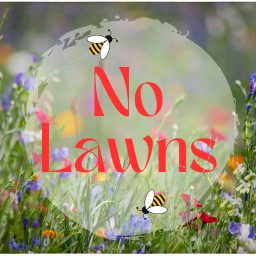When it comes to replacing a lawn with native plants there are a few ways to prepare the site. The two main ones are de-sodding and sheet mulching. In this post I will be discussing the former.
First, here is a link to an album with photos and captions. https://imgur.com/a/0Fh2Ned
De-sodding is simply, lifting the top layer of sod off of the soil.
You might ask why this method and not others. It all comes down to personal preference. I have prepared sites either with de-sodding or sheet mulching. I have found that plants took off much faster with the de-sodding method but you may also have more weeds to contend with.
Some of you may ask, what about tilling? Tilling is almost always not recommended. When you till, you bring up many unwanted seeds out of the seed bank. It is also disrupts the soil.
Now let’s get started…
Step 1: Mow your desired planting site as low as possible
Step 2: Get de-sodding! You can use a shovel, a manual device or a powered one designed for this purpose. A shovel will be very labor-intensive and not very practical for a large area. Your local hardware store may have a powered de-sodder to rent.
Step 3: Remove the sod that has now been separated from the soil. You can use shovels, try to roll it, or any other method. We used our utility tractor to scrape it off.
Step 4: Spread top soil around your new site. A nice thin, even layer will do
And that’s it! If you are planting by seed you can spread it by hand or machine and gently rake it in. Seeds don’t want to be buried deep, just on the surface level.
I hope this helps and please ask me any questions!


I had a native landscape added in a suburban yard back in the 90s, and the landscaper had a third method (that may give you chills!): spray the entire lawn with roundup. Wait two weeks and spray again where the grass is still green. The landscaper came in after about 6 weeks and put in the new plants by cutting holes in the old, dry sod. Pre-mulched and minimal work, fwiw. I thought it was clever - but of course roundup has not proven as harmless as promised. OTOH, an average homeowner isn’t exposed to it that much, and a one-time usage like that is a small amount of material that should have little environmental effect overall - probably no more than a bunch of power-equipment uses.
I think of you do the research, herbicide can work. I think you should absolutely do research before using it though. Some of the big people in the movement like Doug Tallamay talked about how it can be essential in taking out certain invasive and such. But again, I think you need to know what your using, exactly how it works, what it works on, and potential safety concerns.
Oh my! Personally, I stay away from all herbicides. It is certainly a method though. Solarizing is also an option I haven’t tried yet but appears to be relatively low effort.